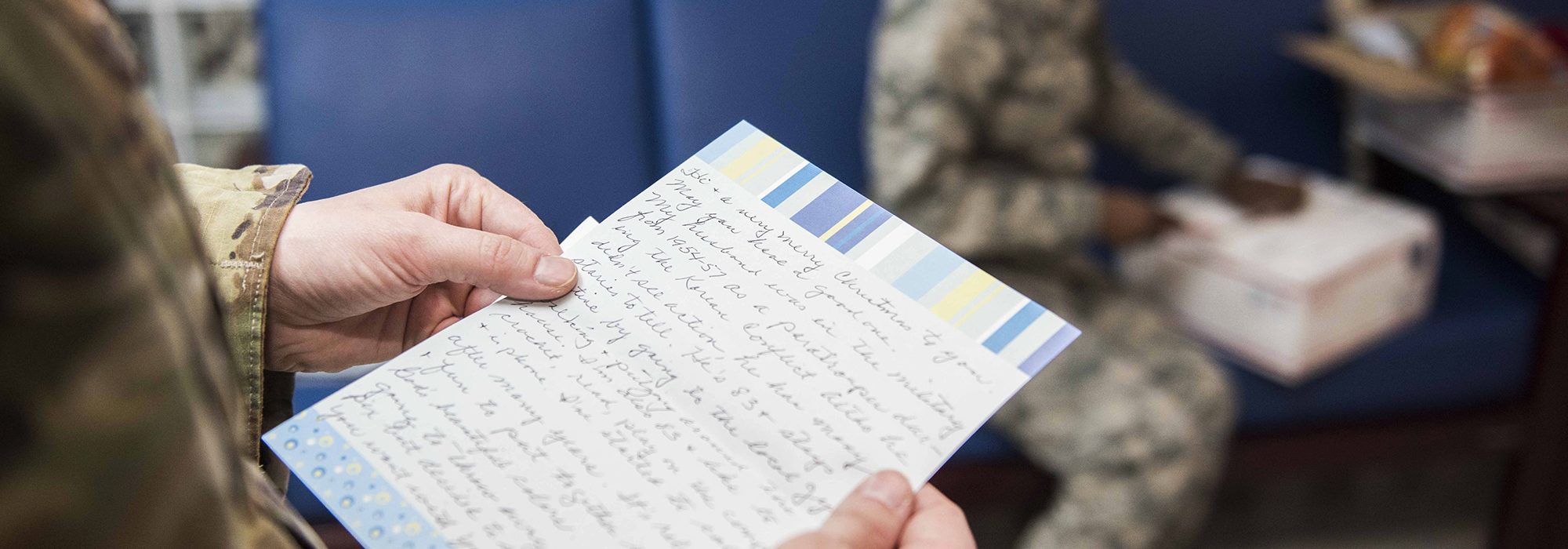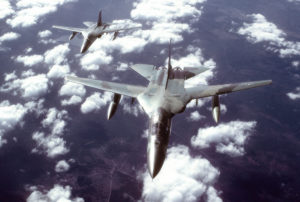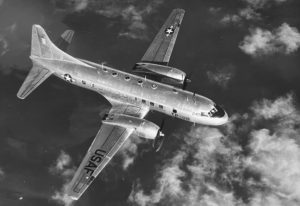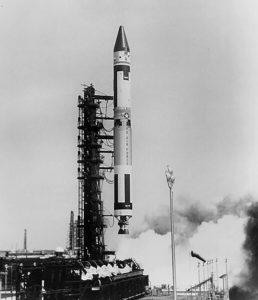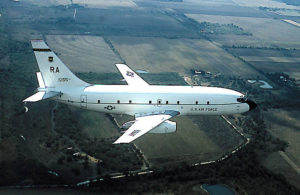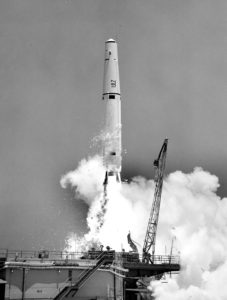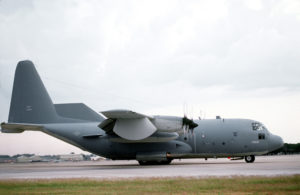We love letters! Write to us at letters@afa.org. To be published, letters should be timely, relevant and concise. Include your name and location. Letters may be edited for space and the editors have final say on which are published.
Chiefs
It was very refreshing to read the words from Gen. Merril A. McPeak and Gen. Ronald R. Fogleman in the August 2022 “Four Chiefs” article [p. 52].
McPeak stated, “What is the Air Force all about?… It’s about excellence.” That vision is too often lost, he said, in other pursuits. Again McPeak, “I hear way too much today about diversity.
“It is not the mission of the Air Force to solve society’s diversity problems. I’m not against diversity, but I am for winning in aerial combat. That comes first.” I couldn’t agree more!
Then Fogleman, “… So I began to try and send the message of what it was we did deter, and if deterrence fails, we fight and win America’s wars. That’s why we’re here. We’re not a social organization. We’re not an employment agency. We’re here to fight and win America’s wars.”
I was grateful to serve under those mindsets and that way of life. As I read about all the nonsense the Air Force is pursuing and prioritizing today, it’s obvious the Air Force has lost its sense of purpose. A perfect example, [recently] Secretary of the Air Force Frank Kendall announced, “The Department of the Air Force offered up new “aspirational” goals for diversity in its officer applicant pool in August.” So, now we’re reinstating racism and gender discrimination by making decisions based on the color of skin and sex of the officer candidate. What happened to merit and ability?
Secretary Kendall, Gen. [Charles Q.] Brown and CMSAF [JoAnne S.] Bass would do well to read and heed the words of Gens. McPeak and Fogleman. Until they do, the Air Force will continue down the path of focusing on diversity and inclusion, to the detriment of winning America’s wars.
CMSgt. Jerald Akers,
USAF (Ret.)
Forest, Va.
The electric copy of this article is eye-opening!
No doubt who the author likes; but the amount of money wasted on a series of useless “new” uniforms and other fashions would have funded a lot of warrior equipment.
In addition his reorganizations made no sense, except to shake up and waste funds on new stationary, flags, signs, patches while adding nothing to function. One wonders if Dugan might not of served the country’s needs better.
If all Chiefs could fly as well as [John P.] Jumper or focus on the troops like Fogleman; the Air Force would be in a superior condition.
The admission that the AFE/EAF was not a stable idea is the first truth about that fantasy I have seen published. The concepts were based upon purely imaginary numbers and never looked at personnel as anything but a series of AFSCs.
The treatment of the USAF in the 90’s was a disgrace, particularly when the Army couldn’t even get assets to [President Bill] Clinton’s military diversion, from his scandal, to fight.
Since then the requirements for Chief seem to have morphed into lemmings as we have had a series of political appointees.
Interesting question, why skip Chief Ryan?
Lastly, the quality of Air Force Secretary starting sinking around this time and continues to raises serious questions about the support for the warriors vs the ever-changing social engineering experience.
Charlie McCormack,
Danville, Conn.
Editor’s note: Chief Michael Ryan’s perspective appears in this issue.
Thanks for a revealing USAF 75th Anniversary edition. I admit to skeptical reading of General McPeak’s interview, but appreciate that he admitted to some mistakes. As a member of the USAF helicopter community during his tenure, I recall changing command patches a couple of times, and some of my fellow rotary team as many as four times in a couple-year period. To say that it led to chaos and confusion is an understatement as each new owning command seemed to learn from scratch how to deal with us castoffs. General Fogleman’s stability (or attempt at it) truly helped thousands of Airmen in this community (both crew and maintenance)!
Speaking of helicopters, I’m sure I’m not the only reader that spotted a swap of captions on pg. 81, identifying the HH-53: Super Jolly Green (“Giant” was omitted from the title) as a CH/HH-3 Jolly Green Giant, and vice versa. An easy mistake for those not familiar with the two similar, but very different, Sikorsky aircraft.
Thanks for an interesting read and updated information on current topics.
Maj. Alan D. Resnicke,
USAF (Ret.)
Silver City, N.M.
The August 2022 edition and especially Part I of “Four Chiefs,” provided very intense reading. I arrived for duty in the Pentagon when General McPeak was CSAF and witnessed General Fogleman’s arrival. What a breath of fresh air the latter was! I was at Nellis, AFB, Nev., before the Pentagon, when McPeak came out to fly one of my F-15s. And so we were prepared to get a D model ready when word from the Pentagon asserted he would only fly a C model. That was just the beginning of his demonstrated arrogance.
And when he did strap on our beautiful F-15C, he never spoke with the crew chief and berated the rest of us (I was a squadron commander) as not being “real workers.” After he landed, not one kind word to the crew chief, nor thanks for a great airplane. He simply signed the forms and left the flight line.
I watched him belittle the weather staffers at one of his commander’s calls in the Pentagon, telling them not to expect promotions, since he saw little need for colonels in the weather business. He was horrible with his people.
Then along came a real leader and gentleman, General Fogleman. He got rid of that ridiculous McPeak uniform and stood up for his people. He is the only CSAF to actually demonstrate integrity. Politics and optics got in the way of the Air Force, and he stood tall and tried to do the right thing (think, Khobar Towers, Kelly Flinn, etc). His, and the Air Force’s values were being trampled on by Secretary of the Air Force and Secretary of Defense and he decided to retire early. God bless men like Fogleman.
General Jumper was my boss twice, once as my wing commander at Nellis, and again as my dual-hatted boss in NATO AIRCENT and USAFE/CC. I have deep respect for the man, him having inherited the world after 9/11. He is so correct in “how do we re-instill confidence,”—by starting internally. Our No. 1 job in the Air Force is deterrence and that begins with the basic ability to put warheads on foreheads.
If we cannot show that we can do that reliably, we have no deterrence.Many of us felt like Gen. [T. Michael] Moseley (and Secretary of the Air Force Michael Wynne) were unfairly cast aside by someone who let his emotions, rather than common sense, do his biding. I was a contractor in the F-22 SPO when Secretary of Defense [Robert] Gates canceled the program at just 187 airframes, when we needed at least 350. We felt he made a rash decision at the expense of our deterrence ability. His “Next-war-itis” is exactly counter to what we were taught at the war colleges.
One does not plan the next war based on the current one, and there was no comparison between the SWA wars and preparing for battle with what I often referred to, the re-emerging Soviet Union, or China. When I retired a second time, from the F-22 SPO, I actually bought Gates’ book to see if I might have missed something. I missed nothing. His decision to cancel the F-22 was a huge mistake.
Col. Frank Alfter,
USAF (Ret.)
Beavercreek, Ohio
75th Anniversary
Thank you for continuing to pursue excellence in reporting and publication. I always look forward to receiving my Air Force Magazine and enjoyed the August 2022 issue [“75 Years of Innovation in Flight,” p. 62].
I’m sure you anticipated many comments about your section on the operations aircraft the Air Force has fielded over the last 75 years. I certainly appreciate the limitations and you did caveat that these pages reflected ‘most’ of the nearly 200 aircraft; and that you have ‘not attempted to portray every variant.’ Yet, I believe you missed the mark when deciding not to show the FB-111.
There are many dedicated crew, ground operations, and base support personnel and systems that will be surprised not to have the FB-111 listed in the bombers pages. The fact this system was a medium-range, high- and low- flying supersonic nuclear bomber should distinguish it enough from the other F-111 variants to give it its on small place in your commemoration.
Having served in the Strategic Air Command for many years, I was quick to see this omission. I’m sure there will be many others who will let you know they missed seeing the FB-111.
Col. Daniel D. Badger Jr.,
USAF (Ret.)
Universal City, Texas
What About These Favorites?
Editor’s Note: Readers both praised and challenged our 20-page “75 Years of Innovation in Flight” feature (August 2022). Here below are some of the planes and systems that didn’t make our compilation—but that readers argue deserved to be included.
The August 2022 Edition is great and I have a suggestion that I hope AFA will consider: Your collection of aircraft photos and historic captions is the best I have ever seen.
(And I’m a retired USAF Public Affairs Officer and retired corporate PR/Advertising guy.) Please consider producing a pamphlet that includes all these great reports and make it available to all of us and the public.
Lt. Col. C.J. Hoppin,
USAFR (Ret.)
Peaks Island, Maine
I know when you list significant aircraft we’ve had in the Air Force since 1947, you risk missing a few, but you really blew it when you failed to include the great T-29 series aircraft. Built by Convair, the T-29 was a mainstay in the Air Force from the early ‘50s and for nearly 40 years. The T-29 was everywhere and had a fully operational mission.
T-29s had many configurations and missions. It was used to train thousands to be navigators (the “Flying Classroom”), and was a solid, reliable aircraft to fly to maintain “pilot proficiency” while serving in nonflying jobs. The “Convair” flew as a medical air evacuation “air ambulance” (the C-131 version, “Samaritan”), and was a reliable personnel transport as a standard “base flight” aircraft.
I logged thousands of hours as an instructor pilot and flew her to bases throughout the U.S. and to Alaska and Panama. She was a grand aircraft that deserves its place in the pantheon of operational aircraft you list.
Lt. Col. John Taylor,
USAF (Ret.)
Puyallup, Wash.
I was disappointed to notice your omission of the Titan III Space Booster on page 84. I was part of the development team from 1964-1969, and we launched several important satellites including Vela, DSP, GPS and several communications satellites until 1982. We also launched NASA’s Helios, Viking and Voyager space probes. From Vandenberg Air Force Base, Calif., we launched the Keyhole intelligence satellites on Titan IIIB,D and 34D until 1989.
How could you overlook a program which contributed so much to our military and civilian space efforts during the Cold War?
Lt. Col. James M. Thompson,
USAF (Ret.)
Carmel, Ind.
The August 2022 issue offers a wonderful retrospective, “Seventy-Five Years of Innovation in Flight.” Unfortunately, it appears to have been allocated a bit too little space. The two-page spread on trainers details all the planes that contributed to undergraduate pilot training. It even shows the T-1 Jayhawk used for training tanker/transport pilots, “as well as navigators.”
Without getting into the debates as to whether combat systems officers are navigators, thousands of navs, RNs, WSOs, and EWOs started their careers in T-29s and T-43s. A few of us even got to come back to fly these airplanes as pilots a few years later. Having spent nearly four of the last 75 years logging T-43 time, it seems some passing reference to these airplanes is appropriate.
Lt. Col. John Valliere,
USAF (Ret.)
Lake Frederick, Va.
As usual, your coverage in the August anniversary issue covered aircraft pretty well, but you shortchanged us Missileers once again. A few years ago, the Association of Air Force Missileers concluded, based on a lot research done by member Greg Ogletree and me (I was executive director at the time) that almost 80,000 Air Force members have served or still serve as Air Force Missileers.
We are a small part of the Air Force, but have made giant contributions to nuclear deterrence, for almost 70 of our 75 year Air Force history. We were and are part of other missions, too, like air defense and air-to-air and air-to-ground combat.
You briefly mentioned Atlas, but only the A and D. How about two key operational Atlas ICBMs, the E and F (12 squadrons), Titan I (6 squadrons), Matador and Mace (deployed in Europe and the Pacific), Jupiter and Thor (IRBMs in Europe) and GLCM (one reason the Soviet union is gone). For a long time, we had BOMARC defending our northern border, and there were a whole lot of air-to-air and air-to-ground systems, nuclear and conventional, that Missileers have worked with. (Hound Dog, ALCM, SRAM, Sidewinder, Falcon, Maverick and many more).
We Missileers are still around, still being trained at Vandenberg, not only on ICBMs, but other Air Force missiles. And Sentinel is on the way.
Col. Charlie Simpson,
USAF (Ret.)
Breckenridge, Colo.
In the section on ISR/C3, my old unit born in Vietnam is not pictured. I’m referring to 7ACCS, ABCCC, EC-130E. It provided command, control and communications, as well as intelligence threat warnings. I believe it first flew out of DaNang, then to Saigon and finally during the war to Thailand, all due to airfield safety concerns. When I was a crew member in the 1980’s the squadron was commanded by a special ops full colonel and based at Keesler Air Force Base, Miss.
One of the planes, tail number 1809 as shown in another aviation magazine, was used as a fuel bladder plane during the failed Iran hostage rescue. This plane was selected due to being one of the few C-130s capable of being airborne refueled. The other publication shortly after the operation published a photo of the burned plane in the Iranian desert. The origin of the plane was not published, however we knew because of the tail number and the very distinctive and numerous antennas. [I was an] AIO Instructor (Airborne Intelligence Officer), one of only 12 in the Air Force at the time.
Capt. Robert Kinzel,
USAF (Ret.)
Jacksonville, Fla.
Words of Wisdom
I am a 10 year veteran of the Air Force (F-111’s, Avionics, 82-92). I wanted to thank you for the great editorial in the August 2022 edition. Incredible piece of writing. I especially want to point out the reference to a little bit of Biblical fact/history “… to quote St. Paul to Timothy … I have fought the good fight, I have finished the race, I have kept the faith!” Awesome seeing in print, this great showing of faith of one the most influential contributors to The Greatest Book Ever Written, hands down. Do not be afraid to add in more from our greatest book in future issues! Just may impact someone (or many someone’s) in a very good way!
Also wanted to comment on the letter from MSgt. Mark Bernhardt [See Letters, August, p. 5]. I concur!!! Specifically the comment “what is the point of focusing on notional, ‘feel good’ stuff like diversity, inclusion, and equality and hyper-vigilance to root out military extremists, when the No. 1 priority should be preparation for a war that promises to be radically different from the “sandboxes” of Iraq and Afghanistan.”
I am not saying these items are not important, they are. Had an old boss who used to preach “do not let perfect get in the way of good!” Great for an engineering organization whose main focus was “margins.” However, the USAF (The total U.S. military for that matter) should strive for “perfect,” because in this business (especially today) … “coming in second place, is a showstopper!”
Chris Cintron
Parkville, Mo.
Space-Based ISR
In regards to “The Evolution of Space-Based ISR,” by Maj. Gen. Thomas Taverney, USAF (Ret.) [August, p. 94.], the author did an excellent job in writing the article. I wish to add a few comments based on my experience as a cartographic officer, which is currently called geospatial intelligence officer, on Active duty from September 1967 to October 1987.
My first assignment was at the Aeronautical Chart and Information Center (ACIC) in downtown St. Louis. ACIC was a function under the HQ USAF DCS for Intelligence. Its mission was to produce aeronautical charts and flight information products mainly for DOD military operations. At the onset of space-based ISR, the first responsibility of ACIC was to develop a digital database from which all ISR, air and missile missions could be planned on a single worldwide geographic/geodetic system (WGS). The final product was a reference system based on the exact shape of the Earth (a geoid) versus the previous methods of using mathematical systems based on various geographical shapes like the spheroid.
The second function of ACIC was to produce flight information products that were necessary to facilitate mission planning and ensure flying safety. By having a standardized digital world geographic reference system, the possibility of flight error by aircraft and missiles was reduced considerably, from errors of many miles to errors of less than a tenth of a foot. ISR collection, reporting, and targeting also increased in accuracy.
Needless to say, ACIC was a leading advocate and instrumental in the development of the Global Positioning System (GPS), which was originally used only for U.S. military air and missile operations. President [Ronald] Reagan directed the civilian use of the GPS which has a reduced accuracy level for limited operations.
ACIC became the Defense Mapping Agency Aerospace Center (DMAAC) when it was consolidated with Navy and Army mapping, charting, and geodetic (MC&G) agencies into the Defense Mapping Agency (DMA) in 1972. In 1996, service and DOD imagery agencies were absorbed into DMA and the name was changed to National Imagery and Mapping Agency (NIMA). In 2003, the name was changed to National Geospatial Agency (NGA) and all of its products and services became known as geospatial intelligence (GEOINT) and its specialists became known as geospatial intelligence personnel.
Lt. Col. Russel A. Noguchi,
USAF (Ret.)
Pearl City, Hawaii
Based on Actual Events
Reading the article titled “Rebuilding America’s Air Power” [September 2022] brought to mind a few hard truths. In the golf game, when you cheat, you’re only cheating yourself, and the same is true for military funding. The pass-through scheme is a means of cheating, and remains pointless as we’re only cheating those who already know better. Also, while the movie “Top Gun: Maverick” was hugely entertaining, the basic plot was a group of pilots having to train to use extraordinary skills because the aircraft they were forced to fly against the target were horribly obsolete for the task.
Entertainment is one thing, but the movie hit too close to home. It’s not merely the Air Force who’s flying assets are dangerously thin, old, and increasingly obsolete. The Navy had abandoned stealth until the F-35C’s finally came online just a few years ago. Overall, the nation’s citizens think we have the finest class military in the world by an overwhelming margin. Civilians where I worked asked me, if that Maverick movie was realistic, then how is it that we pay more for our defense than anyone else, but would be forced to send pilots to fight using outdated aircraft? It was a tough question, but the answers were even tougher.
Every budget battle over the last 30 years has seen every Air Force aircraft program attacked roundly, few receiving any widespread support, and ultimately the numbers purchased being well short of the initially submitted planned requirements. We’ve played that game three decades and that’s long past the peace dividend period. The only remaining question is when will the federal government remember what its first duty is, to provide for the common defense, and get busy fixing the budget issues? One doesn’t see much activism for solution.
Maj. Ken Stallings,
USAF (Ret.)
Douglasville, Ga.
Old Friend
I was a kid growing up at Loring AFB, Maine, ‘68-’83. A B52 flying/landing was so ordinary then. I was in tears as I watched the videos coming from the Loring Museum this summer. The fact that this highly dedicated, enthusiastic group pulled this event together was a miracle. [See “Airframes,” September, pp. 16-17]. It’s an isolated area at the top of Maine.
The area and people from far away still came out in the thousands to see their beloved planes fly over head after leaving in 1994. Thank you for the beautiful picture and recognition. To those who were there, this scene will be in their hearts forever. [My] dad retired as a senior master sergeant. He was a licensed AP mechanic and would go on to work on WWII Warbirds at the Valiant Air Command in Titusville, Fla.
Colleen Iacuzzo
Jacksonville Beach, Fla.
